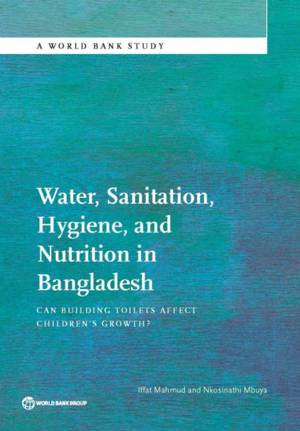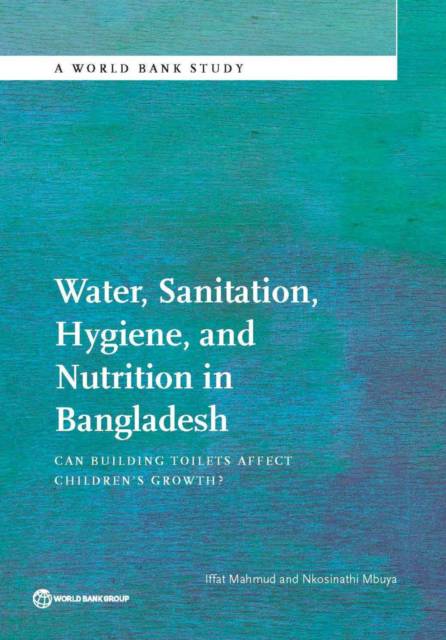
Je cadeautjes zeker op tijd in huis hebben voor de feestdagen? Kom langs in onze winkels en vind het perfecte geschenk!
- Afhalen na 1 uur in een winkel met voorraad
- Gratis thuislevering in België vanaf € 30
- Ruim aanbod met 7 miljoen producten
Je cadeautjes zeker op tijd in huis hebben voor de feestdagen? Kom langs in onze winkels en vind het perfecte geschenk!
- Afhalen na 1 uur in een winkel met voorraad
- Gratis thuislevering in België vanaf € 30
- Ruim aanbod met 7 miljoen producten
Zoeken
Water, Sanitation, Hygiene, and Nutrition in Bangladesh
Can Building Toilets Affect Children's Growth?
Iffat Mahmud, Nkosinathi Mbuya
€ 29,45
+ 58 punten
Omschrijving
Since the 1960s, it has been known that poor water and sanitation causes diarrhea, which consequently compromises child growth and leads to undernutrition. Ample evidence shows that poor water and sanitation causes diarrhea, but there is a growing body of knowledge discussing the magnitude of the impact of diarrhea on undernutrition. A recent hypothesis by Humphrey (2009), for example, states that the predominant impact of contaminated water and poor sanitation on undernutrition is via tropical/environmental enteropathy (triggered by exposure to fecal matter) rather than mediated by diarrhea. This new hypothesis has generated much debate, especially in the South Asia region, on the contribution of water and sanitation to the South Asian Nutrition Enigma. The region is characterized by unusually high rates of child undernutrition relative to its income level, as well as a slow reduction in undernutrition. Practitioners have struggled to decipher the reasons behind this 'anomaly.' This report provides a systematic review of the evidence to date, both published and grey literature, on the relationship between water and sanitation and nutrition. We also survey the potential impact of improved water, sanitation, and hygiene (WASH) on undernutrition. This is the first report that undertakes a thorough review and discussion of WASH and nutrition in Bangladesh. The report is meant to serve two purposes. First, it synthesizes the results/evidence evolving on the pathway of WASH and undernutrition for use by practitioners working in the nutrition and water and sanitation sectors to stimulate technical discussions and effective collaboration among stakeholders. Second, this report serves as an advocacy tool, primarily for policy makers, to assist them in formulating a multisectoral approach to tackling the undernutrition problem.
Specificaties
Betrokkenen
- Auteur(s):
- Uitgeverij:
Inhoud
- Aantal bladzijden:
- 88
- Taal:
- Engels
- Reeks:
Eigenschappen
- Productcode (EAN):
- 9781464806988
- Verschijningsdatum:
- 9/11/2015
- Uitvoering:
- Paperback
- Formaat:
- Trade paperback (VS)
- Afmetingen:
- 178 mm x 254 mm
- Gewicht:
- 172 g

Alleen bij Standaard Boekhandel
+ 58 punten op je klantenkaart van Standaard Boekhandel
Beoordelingen
We publiceren alleen reviews die voldoen aan de voorwaarden voor reviews. Bekijk onze voorwaarden voor reviews.









